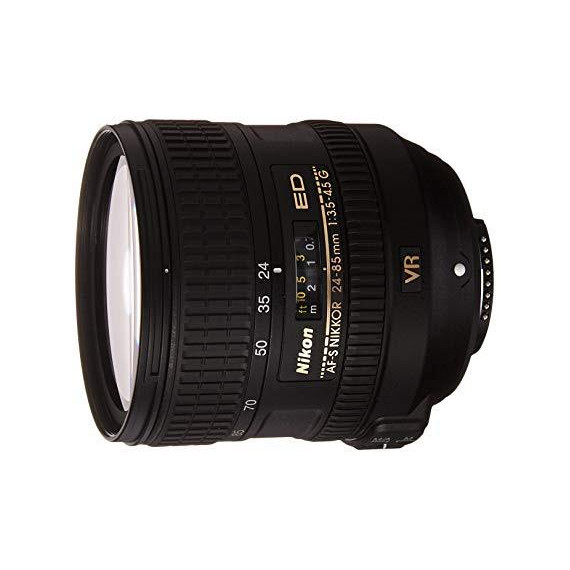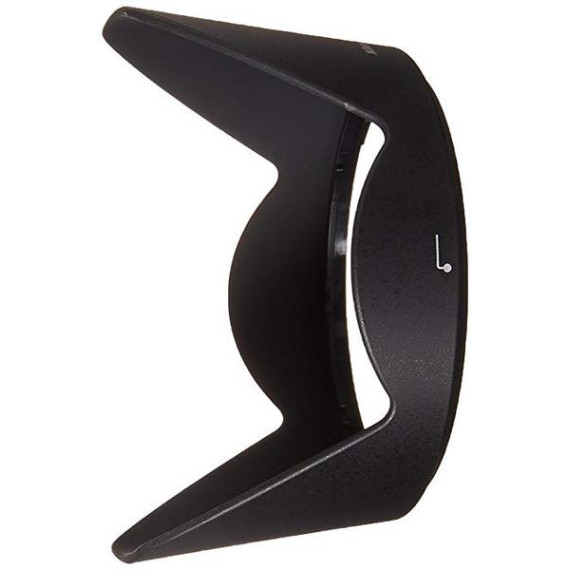Gatorowl
When Nikon released this lens, most of the websites called it a nice consumer-grade lens, but a lens that was unsuitable for a D800/D800E. For Nikon since the mid-2000s, FX zoom lenses have been notorious for their compromises. The pro-grade zoom lenses like the 14-24mm, 24-70mm, and 70-200mm are huge bulky beasts that weigh a ton, dont easily fit into a compact carrying case, and cost a minor fortune (somewhat north of $2000 each). Lesser lenses like the 16-35mm and 24-120mm are slower--f4 instead of f2.8--, provide noticeably inferior IQ (but still quite good), for about 40% off--still north of $1000--, and are still quite bulky. In many cases it was hard to rationalize stepping down to one of these mid-grade lenses when getting a good-quality used pro-grade alternative could be had for just $500-$600 more. Now, enter the 24-85mm at $600. It weighs comparatively little, and its size (and, unfortunately, feel) are reminiscent more of a cheap DX kit lens than the built-like-a-tank FX zooms Nikon had been releasing. So, is this lens essentially an FX version of the DX kit lenses, or could it actually be something rather special? My answer to both question is, definitely "yes." It is almost certainly slated to be the kit lens for the forthcoming "affordable" D600 FX camera, and "yes" it is indeed special. In this review, I focus on the IQ. Others have covered the feel and ergonomics, so I have little to add to what they have said. Instead I tested this lens against four other lenses: the 14-24mm, the 28mm 1.8G, the 50mm 1.8G, and the 85mm 1.8G. My test camera was the D800E. I took all test shots hand-held. Therefore, if you want a scientifically verifiable test, look to the professional reviewers. I was particularly concerned about how well this lens performed under 35mm because I knew there would be times when I did not want to carry the big hulking 14-24mm with me, but I still wanted wide coverage. If this lens was good enough under 35mm, I could care less if it worked at 50mm or above because I have prime lenses covering that range. Okay on to the review. 24mm: The 2485 starts at f3.5. The 1424 is faster starting at f2.8. This is just a 2/3 stop difference, so really no big deal. I was truly amazed at what I observed. The 2485 is sharp wide open. In the center of the frame, these lenses are neck and neck. Many say that the 1424 is weakest at 24mm, so that may explain why the 2485 kept up. Regardless, in the center of the frame there was little difference. In fact the 2485 was sharper in some regions close to the center. The edges were a different story. the 2485 is noticeably softer on the edges. Frankly, you have to get something for spending those pro-level dollars! Another thing I noticed is that the 2485 seemed sharper at distance. I dont think the lens is better, rather I think that I see the VR kicking in eliminating shake that becomes apparent only when magnified by (relatively) great distance. Overall, the 2485 performs nicely at this focal length. 28mm: Pretty much the same result as at 24mm. Some important observations: the 2485 wide open is now f3.8 versus the 28mm at f1.8. This is now a much more significant 2 stop difference. This might matter to you. Also, the 28mm has a region of softness part-way to the edge that corresponds to the DX edge. Its not bad, but the 2485 is sharper in this area. So, you must trade edge softness for mid-sensor softness plus slower speed versus a quite fast lens. I dont really need a fast (faster than f2.8) wide angle lens, so the 28mm went back. 50mm: Here, the 2485 is really losing ground on the speed frontier. Wide open, it is now f4.2 versus the 50s f1.8. the 2485 is still softer in the corners than the prime, but it is not nearly as noticeable. The 2485 doesnt appear to pick up that much sharpness stopped down. In the center it is just as sharp as the 50mm at f4 and doesnt lose much ground until very close to the edge. At 50mm, the 2485 is quite nice, but it is really too slow to replace the 50mm for all purposes (you will miss the prime shooting inside and in low-light settings). 85mm: Here there is still edge softness, but it is not nearly as bad as observed at 28mm (perhaps, the new 28mm is one of Nikons sharpest edge-to-edge). Center sharpness between the two lenses is comparable. Here, the benefits of VR are readily apparent. Anytime the shutter speed dropped below 1/100sec, the 2485 typically produced sharper results. Therefore, if you are shooting outside with the 85mm prime, you may want to bring along a tripod for the absolute best results. the 2485 is quite slow. Wide open it is f4.5. However, given the price, Im not unhappy with this value. the 16-35mm and 24-120mm are both constant f4 lenses. This third-stop difference isnt significant in my opinion and is well worth the lower price. Im glad I have the 85mm, an incredible value. However, I know that if I dont have time to switch lenses, I can be confident to get a very good shot by zooming all the way out with my 2485. Color and contrast are very close between all the tested lenses and the 2485. The 2485 in general had more CA (purple fringing) than the other lenses, but nothing that couldnt be easily corrected in post. The 2485 bokeh (quality of background blur) is--not unexpectedly--weak. I was embarrassed to compare it to any of these lenses. It was especially inferior to the 50 and 85mm primes, which have very good to excellent bokeh. Therefore, the 2485 is in my opinion a keeper. It stacks up well against wide-angle prime lenses and isnt too much slower. Zoomed out, it is competitive for overlapping aperture values and can hold you over until you can afford a prime lens. I wish I had the 24120 to compare it to. I suspect the lenses are rather close. In exchange for 35mm less reach, the 2485 is half the price, half a pound lighter, and much more compact. So, yes it is special. It doesnt get 5 stars because it is a variable speed lens, and it does suffer from edge softness. Moreover, if you are a pro and/or you bang your kit around a bit, I wouldnt have high hopes for this lens durability. But the 2485 offers very little else to complain about. I recommend it for any non-pro Nikon FX user who occasionally--or frequently--wants to travel light. I also think that it is an excellent choice as a stopgap lens for anyone who broke their bank buying a D800. This lens will serve you quite well until you can afford to purchase high-quality zoom lenses. UPDATE: 7-23 I was a bit concerned about results at 85mm and how much difference VR made at that FL. So, I retested at some of the focal lengths, but this time making sure that I kept shutter speeds high enough (1/300s or better) to eliminate the effects of VR. I also wanted to look at the effects of stopping the aperture down. In general, I am still extremely impressed with the 2485 performance up to 50mm. Except in the corners, it is really hard to distinguish this lens performance against primes and pro-quality zooms in the 24-30mm range. Moreover, the corners do improve on stopping down. Therefore, if you can shoot at f8 or higher, the uniformity of the results increases significantly. Overall, my impression is that the 2485 seems to be best at almost all FL by stopping down to f8 (Id need to test more to confirm). Still, it is very good wide open with excellent center resolution at most aperture values. I added my Tamron 70-300mm VC lens to the comparison and tested at 70 and 85mm. The Tamron was clearly better than the 2485 at both FLs. In addition the 85mm prime with high shutter speeds was also noticeably sharper. Therefore, the 2485 is good in the 50-85mm range, but not special. If you want peak IQ performance above 50mm, you need to look elsewhere. Now, for most, these differences are only noticeable at high magnification (100% or higher; the D800E looks good up to 300%!). For non-pixel-peepers at normal viewing size (printed or full screen on a 27" monitor) some corner softness is about the only noticeable difference between these lenses, and most of that softness disappears on stopping down to f8 or higher. Therefore, for a walk-around, I still find this lens useful. However, for critical shots when I want to get the best IQ at short-tele fL in good light, I will switch to the 85mm. UPDATE: Mid-Oct Most of the professional review sites have now tested this lens. Their results tend to agree with mine except that they--with one exception--do not observe the strong performance at wide FLs that I did. I suspect that most review sites, in order to be scientific, use test charts and at relatively short distances. My tests were done at about 10-50 meters. Lenses do perform differently at different distances. E.g., the 14-24mm is known to be relatively weak at 24mm when focused to infinity. I suspect that this is part of the reason that the 24-85mm performed better in my test at 24mm. My test results seem to be confirmed by the camera laboratory test (abbreviate laboratory with lab). They are one of the few sites that test lenses at far distance. They concluded that the 24-85mm is as good or better than the 24-120mm at infinity depending on the FL. Thus, for landscape shooting, the 24-85mm may be a secret gem. However, if you plan to shoot interiors--or you really dislike soft corners/edges--, you may be better off using primes or a more expensive zoom.








